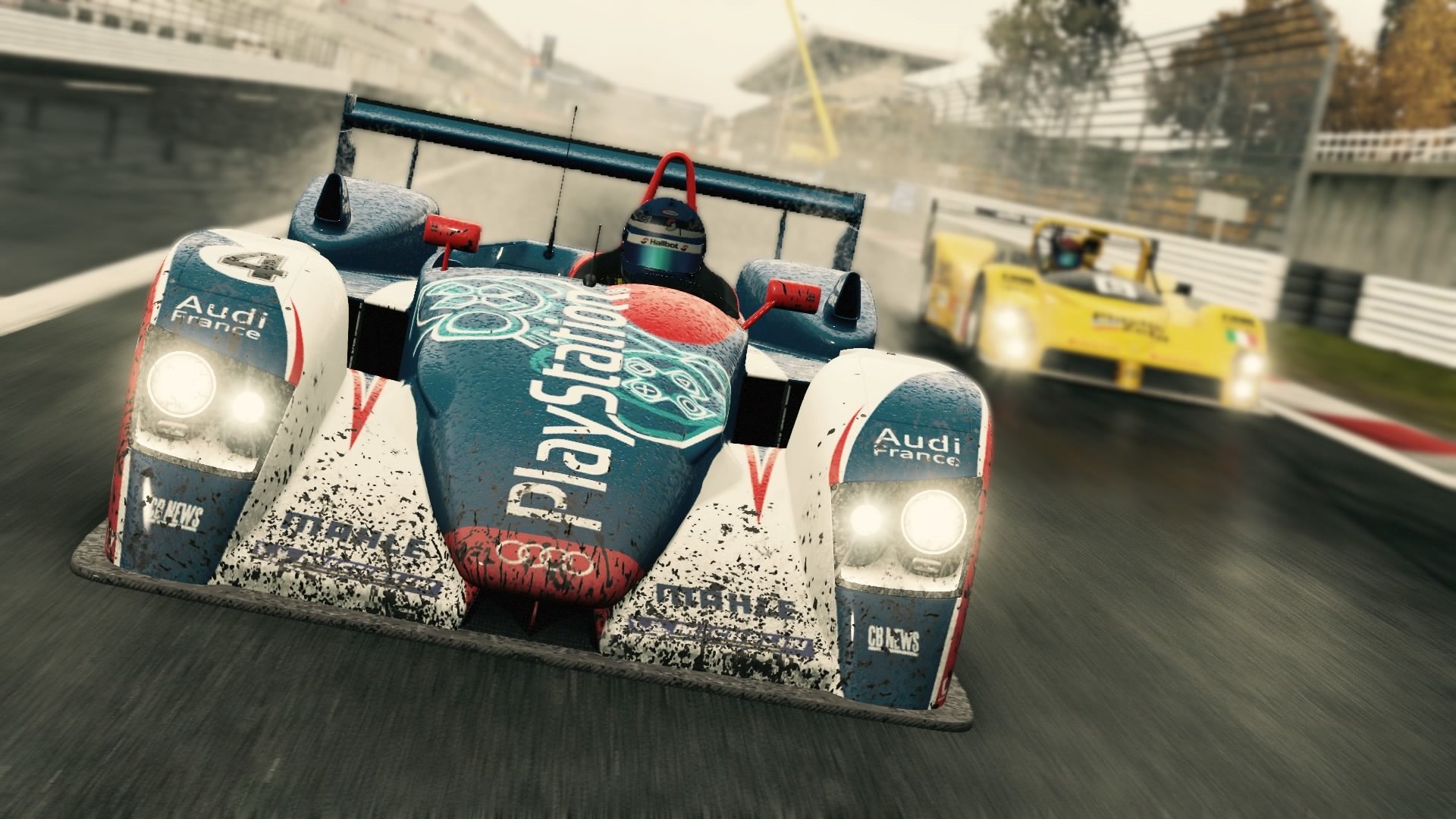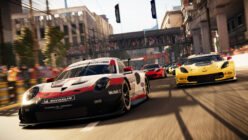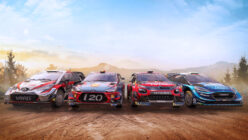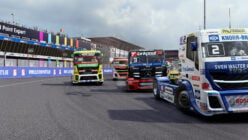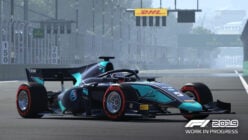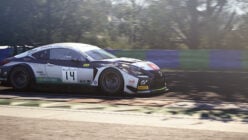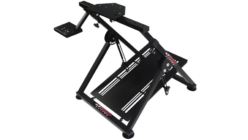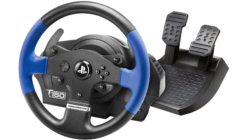The sim racing season has begun. Okay, it arguably kicked off a month ago with F1 2017 (read our review), but for those looking for a game featuring multiple disciplines, Project CARS 2 is the real starting point.
It launches before two other heavy hitters, but boasts a solid number of features both GT Sport and Forza Motorsport 7 can only dream of. Indeed, SMS has gone on record saying the competition is playing catch up.
The original game was similarly ambitious. We revisited it last week and were reminded that, despite its flaws, it was a fun, addictive look at the world of motorsports. Has the sequel righted the wrongs and put the franchise on a clear flight path? Or are we witnessing Icarus, flying a little too close to the sun?
Editor’s Note: We apologize to our readers who have been waiting for our review of Project CARS 2. Despite playing the game at E3 and having participated in the media preview, Bandai-Namco neither acknowledged our requests to be included in the review process, nor explained why. The copy of the game evaluated here was purchased by the author via the PlayStation Store.
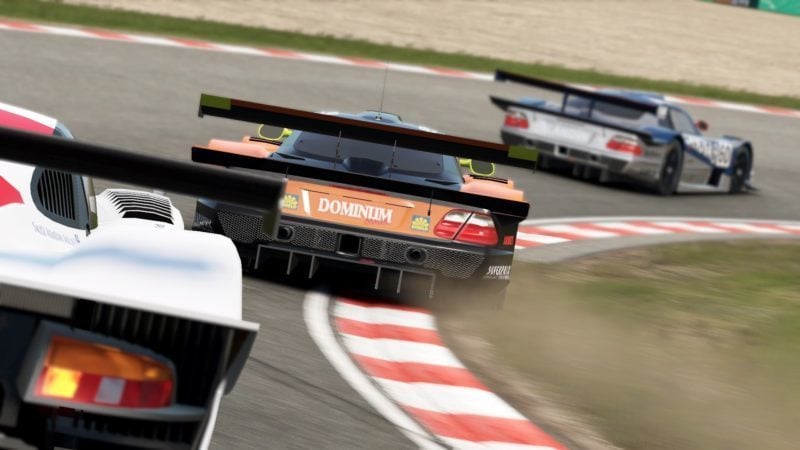
Content and Value For Money –
Let’s just get this out of the way now: the sheer amount of tracks does this category a huge favor. Project CARS 2 is the best example yet that a racing game is only as strong as its circuits. There are so many great tracks to choose from, that left to your own devices, you could easily lose hours thinking up the next car/track combo you want to explore.
LiveTrack 3.0 multiplies this feeling. The original game already had dynamic time and weather across the whole lineup, but PCARS2’s (even bigger) track list now adds seasons to the mix. Circuits feel alive and ever-changing in a way they never have in a mainstream racing game before.
My first visit to Knockhill in-game was in picture-perfect summer conditions, just as you’d expect of any other game (if they included it). The next time, though, it was late afternoon — and raining. It took on a whole new attitude with a sheen of water coating the short circuit.
A few races later I was at Brands Hatch. It’s a track I’ve become intimately familiar with over the last few years, since it’s shown up in practically every racing game. Before I switched over to autopilot, I noticed snow had started to fall. Paddock Hill with the white stuff falling? I couldn’t wait to start.
LiveTrack doesn’t just mean the seasons are new, either. The tracks continue to change as you race. Tease out the event length and you’ll get to watch the racing line begin to dry on a wet track. If it rains around noon and the sun comes out, the puddles directly under the trees will take longer to disperse. But, if it’s closer to sundown, the trees’ shadows will stretch across the tarmac, and puddles will be affected accordingly.
Luckily, there are a lot of cars you’ll want to experience these 60 living, breathing tracks with. 180-ish may not sound like much in the face of FM7’s 700-plus, but SMS has carefully curated this selection, resulting in a surprising amount of depth. Most of the cars from the first game return — though I’m starting the petition for the Caterham Classic’s return here and now — and they’re joined by Ferrari, Porsche, Lambo, and more.
The GT3 lineup is exhaustive (and even includes full Pirelli World Challenge sponsorship). There’s a healthy number of ’90s race cars too, from GTO, GT1, and LMP900 disciplines. Around four dozen road cars anchor the game, from the cutting-edge McLaren 720S to the badass 1966 Mustang Fastback.
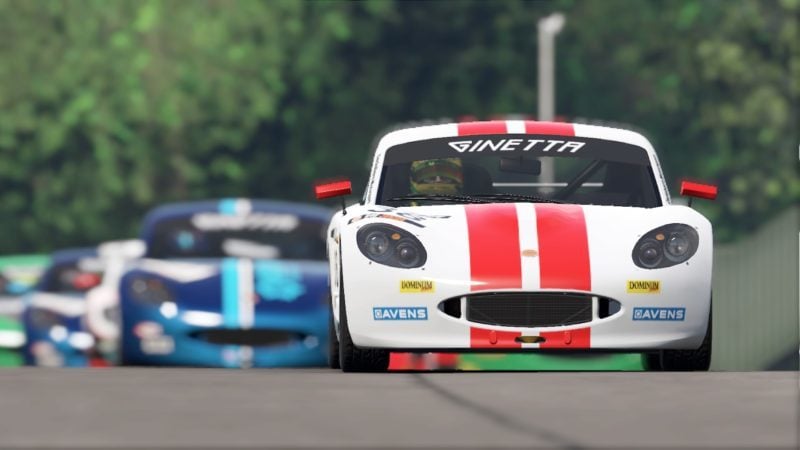
SMS has given Career Mode some choice improvements this go-round. Some of the most elite disciplines are locked away, forcing you to earn them, but that’s no bad thing. The game gives you a clear progression path when picking your starter series, which is also good. SMS has spun Invitationals off into their own section, and they can be completed at your own pace. No more endlessly skipping events in a calendar!
New to the Project CARS career experience is manufacturer events. Throughout your career you’ll receive invites from 14 marques to drive their cars in special events. Wrap up these challenges and you’ll become a Brand Ambassador. In truth these aren’t much different from the other invitationals, but serve as an excellent reminder of the expanded manufacturer roster.
Unfortunately, taking part in any of the career mode races will introduce you to a sizeable number of glitches and bugs. For one, while the menu presentation is a serious step up from the last game, it’s also seriously slow. I experienced lots of lag everywhere outside of the main menu, sometimes as long as ten seconds.
You won’t escape the bugs on track, either. Make sure you’re on-board with the length of qualifying before you start a race: if you set a time you’re happy with and elect to skip to the end of the session, the AI will magically find multiple seconds — regardless of if there’s 30 seconds left on the clock. This exact issue was present in the first game, which makes it all the more disappointing.
The driving line also returns seemingly unchanged from PCARS1. That means it still appears and disappears at random, rendering it almost useless as a learning tool. Hardcore players will scoff at the mere mention of the driving aid, but if PCARS2 is going to lure more casual players in, they need to be able to learn the tracks.
Project CARS 2 features sliders for the AI’s skill level, as well as its aggression. I never touched the latter, since it seemed fine as is. After my first career race, I bumped up the skill level from the default 60 in 5-point increments each race. 80 was comfortable; I wasn’t pushing at 100%, but a mistake would practically guarantee I’d be off the podium.
So long as the conditions stay relatively sane, the AI puts up a good fight at this setting. Introduce extreme rain or snow into the mix though, and the computer-controlled drivers seem unaffected by it, proudly flying along at a full clip as you struggle for grip. Also, don’t take any of the top-shelf prototypes or open-wheelers to Azure Circuit. You’ll end up with a scene straight out of Burnout.
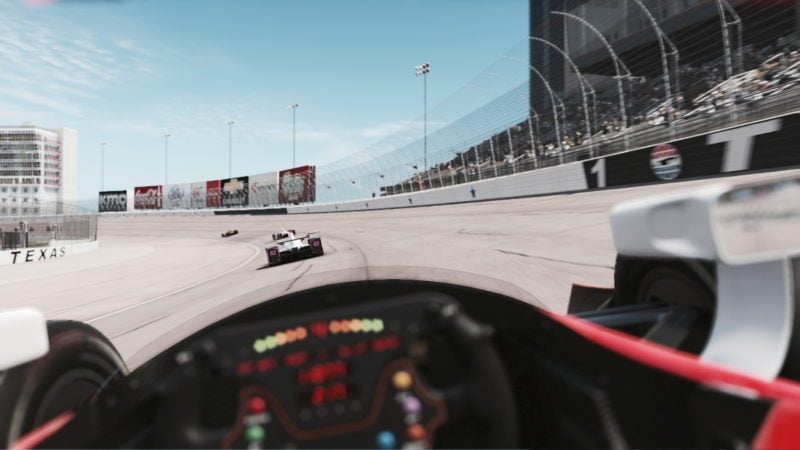
Online Features –
With the first game being a staple of esports events pretty much since inception, PCARS2 aims to refine the package. The biggest, most welcome addition is the new Racing License.
All players start with a U1500 rating. The letter grade moves from U (Unlicensed) up to F, through to A, and then S. This is your racecraft rating: how cleanly you drive. The number beside it is a skill-based score, which, in the simplest terms, raises when you win/complete races, and lowers when you lose.
The racing license dictates which events you’ll be able to participate in. It also doubles as an easy way to get a rough idea of your competition. That’s great!
What isn’t is that the much-hyped Online Championships mode isn’t actually in the game. Promising to change how player-ran series were handled, it sounded like a fantastic addition to the game, and would’ve made great use of the new licensing system. It’s earmarked for a “future update”, though there’s no timeline.
Without that, online is limited to user-created single races. There are no default, always-cycling hoppers, so you’re at the mercy of the community’s tastes (unless you want to host your own event). The main online screen will only show 20 rooms at a time, so if you’re looking for a particular discipline, you’ll want to filter by that. GT3 rooms dominate, while multi-class setups tend to include them and at least one LMP category.
Entering a lobby is a quick affair. You’ll get an overview of the event details, pick your car, and head out on track. Changing vehicles isn’t possible without leaving the room, even in practice, so choose wisely.
On-track action is inconsistent. Players entering the room causes a massive lag spike (or three), ruining any flow you might’ve had on your hot qualifying lap. Connections seemed fairly consistent when I took part in races, but our community has reported plenty of disconnects. What’s worse, the game is unfairly punitive to racers if the host disconnects, docking far more points off their license than even a race win will add.
There have also been reports of players experiencing completely different weather conditions in the same room. Luckily, I never witnessed that — at least, not that I knew of — but that would effectively ruin any serious race.
On the plus side, hosts have an incredible level of control over rooms. The 16-player lobbies can be divided into four classes if you so choose — and that’s any classes, not just pre-determined splits. You can force manual pit stops, the level of aids drivers can lean on, and the precise times for all sessions of the event. There’s also the option to set (private) lobbies to broadcast-ready, using the dedicated new features.
In addition to the traditional online experience, Project CARS 2 comes with the Community Events that proved so popular in the first game. Out of the four launch events, my favorite was easily the Caterham around Knockhill.
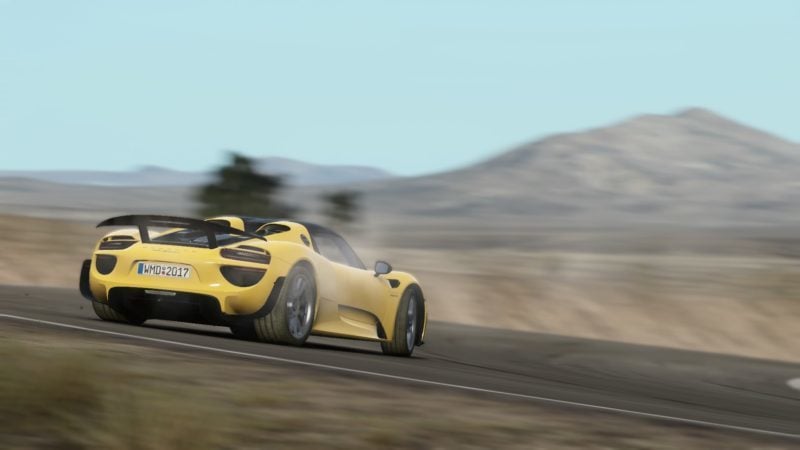
Driving Physics and Handling –
The physics engine itself seems to be heavily based on the system in PCARS1. Now, that’s not a bad thing: the area that needed a lot of work was the part past the tires’ adhesion, and that largely does feel improved. Race cars are spiky and hard to save, but that’s to be expected. Road cars feel more malleable, especially those on older, taller-sidewalled tires.
LiveTrack 3.0 isn’t just for show: the cars respond to rain in a way that feels authentic and believable. Running the little Ginetta Junior over a small trickle of water across the track fed back into the wheel, giving me an idea of what was going on at surface level. Meanwhile, bigger puddles turn into full-on aquaplaning moments, and that too is telegraphed clearly to the player. I wasn’t paying attention near the end of a lap at Brands, and when my right-front took a brief swim, the whole car pitched sideways. It was almost race-ending — yet awesome.
The force feedback worked in that situation, but there are still issues with it. Swapping back and forth between PCARS2 and the first game, I was amazed at how much more information I was getting from the car in the first game — specifically involving rumble strips. This is something I’ve mentioned before (as far back as our E3 impressions), but I’m forced to repeat it here: there’s almost no distinction from the wheel between regular tarmac and strips.
I tried everything. The first day of playing was spent almost exclusively fiddling with the FFB menu. Mercifully, it’s much simpler now, but the flip side is that there’s less for the user to actually change. It’s possible there’s a glitch here: I’m using the Fanatec CSL Elite PS4, and for whatever reason, it shows up as a “Thrustmaster Fanatec CSRE” in the menu. But no matter what, the most I’ve found is a tiny hint of feedback from the rim when running one side of the car over the old red-and-whites.
There are three flavors to the FFB. The game starts in Raw, which according to the game, gives you “unfiltered force feedback”. The full descriptions for all three:
- Immersive: Replicates the feel of road surfaces, kerbs, tyre slip, weight and suspension movements felt through the steering wheel and as experienced in the real world.
- Informative: Designed to give more of a detailed feel of road surfaces, kerbs, tyre slip, weight, and suspension movements.
- Raw: Unfiltered Force Feedback, allowing you to feel their full strength of the various forces felt by drivers.
What the game doesn’t mention is that the first two require calibration time on-track. You’ll head out and wonder why the wheel has gone numb, but feedback will slowly fill in over a few laps. It’s an interesting sensation, but should be mentioned somewhere. Plus, since the Control menu is saved every time you exit, make sure you don’t accidentally modify anything in there, or you’ll need to run the calibration laps again.
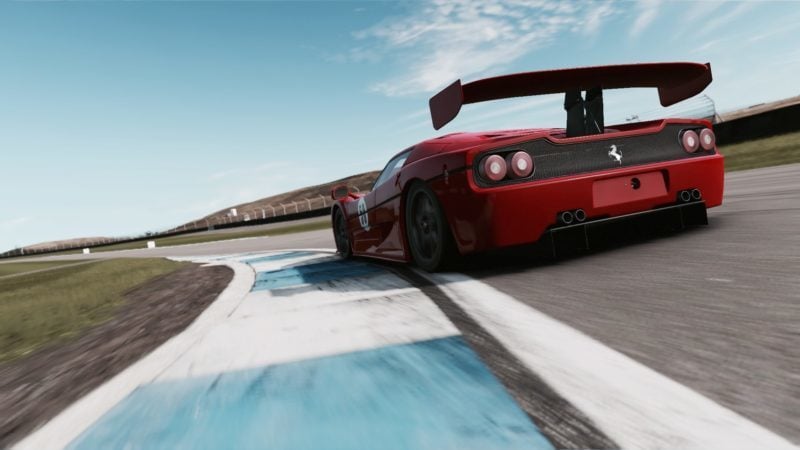
With the wheel dialed in as best I’ve been able to manage (using these settings from our community — thanks ojgt!), Project CARS2 can feel great. I’ve fallen in love with my little Ginetta Junior starter car: despite only having 100hp, I can feel what each corner of the car is doing. It has a delicious sense of balance, able to be chucked into a corner and gracefully steered via my right foot. You can feel it move on its suspension, and respond to changes the same way you would in the real world.
Much like the first game, the experience depends on the car, so you’ll probably be fiddling with the FFB menu if you’re jumping between vastly different disciplines. Most road cars and GT-based race cars feel quite good with my current setup, but Indy feels hopelessly wayward. The Rallycross cars feel universally light, but that aspect of the game is so much fun, you probably won’t notice.
And what of the controller? It certainly isn’t the — for lack of a better term — steaming pile the first game’s was. The game is indeed playable on a pad, but I never gelled with it the same way I have with other games. I adopted settings by online racing speedster Johnson (you can find them here) and the pad became even better. I was more than competitive in an online GT3 race around Knockhill with those.
There are glitches here too, though. Tire temperatures are inconsistent: you’ll always start a free practice session on ice-cold tires, though the HUD shows them at optimal temp in the pit. I’ve started a fair amount of races to see the tires flashing blue/green in the corner of the screen. Checking the telemetry reveals constant temp spikes. These slowly fade as the race continues, but it’s an odd thing to see.
Some cars won’t build heat into their tires. I’ve given up on a Ginetta event because of it. Other cars simply won’t make it around a track in the snow at a pace higher than a light jog, even on appropriate rubber. These are glitches in the very early stages of the game — how were they missed?

Graphics –
The graphics, at least on a vanilla PS4, are largely the same as the first game. In ways, they may actually be slightly worse, though with the trade-off being LiveTrack 3.0, I happily accept it. It’s not a visually offensive game — it just doesn’t wow. It most certainly impresses on a decked-out PC, but it can’t match the visual quality of other console racers when running on PS4.
Looking past the eye-candy, the framerate is much more consistent than PCARS1. It still won’t hit a locked 60fps (on vanilla or Pro, according to Digital Foundry), but it at least gets closer, more of the time. There’s also less screen tearing — a phenomenon I had to explain to my girlfriend when she spotted it in PCARS1, so common was it there.
The lighting is, generally, quite impressive. New cars like the McLaren 720S show off the lighting model at its best, especially on new tracks. Tracks built with snow from the ground-up, like the Mercedes test track, look great. Having the Northern Lights twinkling overhead as I tried to keep the Jag XJ220 straight was a joy.
Circuits that have had snow added to them fare less well. The absolute worst is Bannochbrae in blizzard conditions. This is a beautiful track in its original season, but graphically it’s about on par with the opening winter mission in Grand Theft Auto V — on PS3. Geometry is simplistic, there’s pop-up everywhere, and worst of all, the scenery is transparent. It’s a handy way to know what’s coming next, I suppose.
Other graphical glitches abound. Leaving the pits at most tracks has an odd, bright-colored batch of pixels hanging in the air. The sun’s glare popped up without any transparency on another session; white squares with orange bursts took its place. In an online event at COTA, the track would very briefly disappear every time going around T9.
Slightly Mad improved photo mode for Project CARS 2. In a way, this is true; the number of features and the amount of control players have now is much better than before. No longer will shutterbugs need to plug in a keyboard to get the best from the game.
On PS4, photo mode seems to have a near-complete lack of anti-aliasing. It’s easily noticeable on the spoilers of cars, with jaggies all over. The depth of field settings only seem to exacerbate this — try putting foliage between the drone and your subject to see what I mean. Shutter speed seems to affect the road surface and the wheel rotations only: tire markings will remain blurred no matter what settings you use.
Replays nail the TV-style camera angles that add to a feeling of authenticity. A 30fps lock isn’t a problem in itself, but the lack of any motion blur or other post-processing hurts the final product. Some situations involving fog lead to the camera showing nothing but headlights and windshields, like an oddly specific procession of ghost cars.
Rain — particularly thunderstorm — conditions are a treat from the driver’s seat, though. Lightning pierces the sky and casts its light on the car and tracks, and you can see the wind affecting the drops. Puddles splash, cars push big rooster tails up into the air, and the wipers work overtime to give you a semblance of sight. It’s an adrenaline rush.
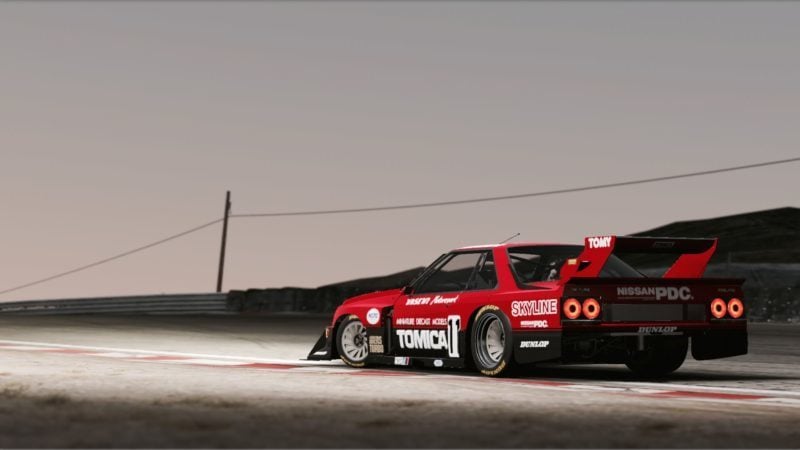
Sound Design –
Most cars sound great. The Jag F-Type has that burly, big V8 rumble that borders on the pornographic. BMW’s M6 GT3 has a more industrial engine note, mixed with a whole lot of transmission whine. The only disappointing car I can think of in terms of engine note was the F50 GT. It did not sound like it wanted to kill me, and that’s just not right!
Atmospherics count for a lot in PCARS2. Going off track has sand pitter-pattering in your wheel wells long after you’ve got back on the black stuff. You not only see the wipers, but hear them; same too with the water pelting the windshield. I felt immersed in the car, more so than any other driving game I’ve played this year.
Your crew chief may repeat himself a fair amount of the time, but props to SMS for at least including him. His presence helps sell the idea of you actually racing, not just putting in laps in a game.
Spatial positioning could use some work. Replays are the most obvious example: your car is massively louder than anything else around it. Plus, it remains that way long after it’s driven off into the distance.
Easily the worst aspect of the sound package is the tire squeal. It sounds like someone is torturing a hamster. Maybe a member of the team had a traumatic experience with a pet as a kid? I don’t know, but I do know you’ll hear this a lot, since the game is all too eager to let it loose at any opportunity.
Finally, while it may not be to everyone’s tastes, I’ll readily admit I like the menu music. We got a look at the making of the soundtrack last month, and it offers a suitably epic backing track for a racing career. Well done, Stephen Baysted and the rest of SMS’ audio team.
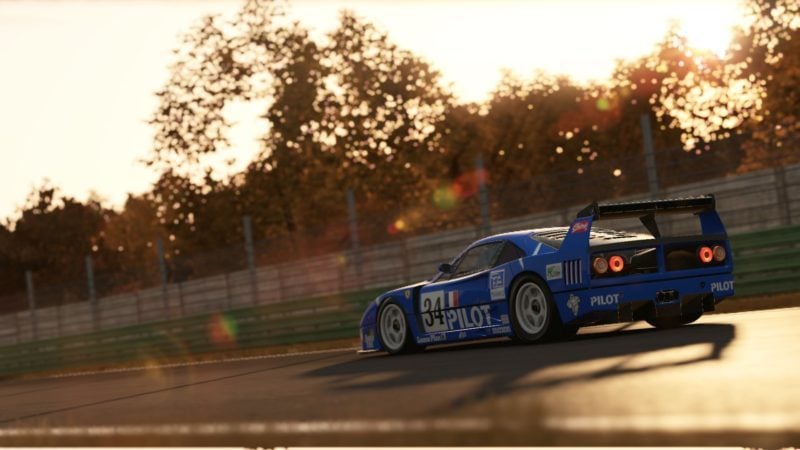
The Verdict
Much like the first game, Project CARS 2 is a story of peaks and valleys. I’ve sunk a lot of hours into the first one over the summer in preparation for this. It had its problems, but an endurance race at La Sarthe was one of the single best driving experiences I’ve had this generation.
Will PCARS2 top that? It certainly has the ingredients to. I can’t overstate the importance of LiveTrack 3.0: it really does change the game. It makes the number of options feel practically endless. Even after spending almost 20 hours with the game, I still have a large list of car/track combos I’ve been meaning to try. The replayability is immense.
Unfortunately, I’ve also got a list of bugs and glitches that continues to grow. Some are minor — yeah, every video looks like there’s a milky film over it — but some aren’t. I started playing the game very early Friday morning; in that time I’ve already been forced to close the application six times. Turned the wheel off? Game unresponsive. Watched then saved a replay after winning a championship? Game unresponsive.
What makes this all the more worrisome is that we’ve been here before. Two years ago, Project CARS launched with a litany of bugs. Slowly but surely, most of them were fixed. SMS acknowledged this, and way back in January, we were told PCARS2 was already heading into QA. Yet here we are, with the retail version featuring its own new setbacks, plus issues carried over from the original.
The building blocks are here for a fantastic game. It has moments of brilliance: this is a title that has made me lust for a 100hp car. The FFB is better (aside from it ignoring curbs, still), the over-the-limit tire model is better, and the track list is outstanding.
But that lack of polish may be too much for some, at least on release. Judging by the GOTY edition of Project CARS, PCARS2 could be a fantastic title in a few months. Right now though, the wax is starting to melt on those wings. Here’s hoping the team at SMS charts a course correction.
Project CARS 2 (PS4)
Learn more about how our rating system works.
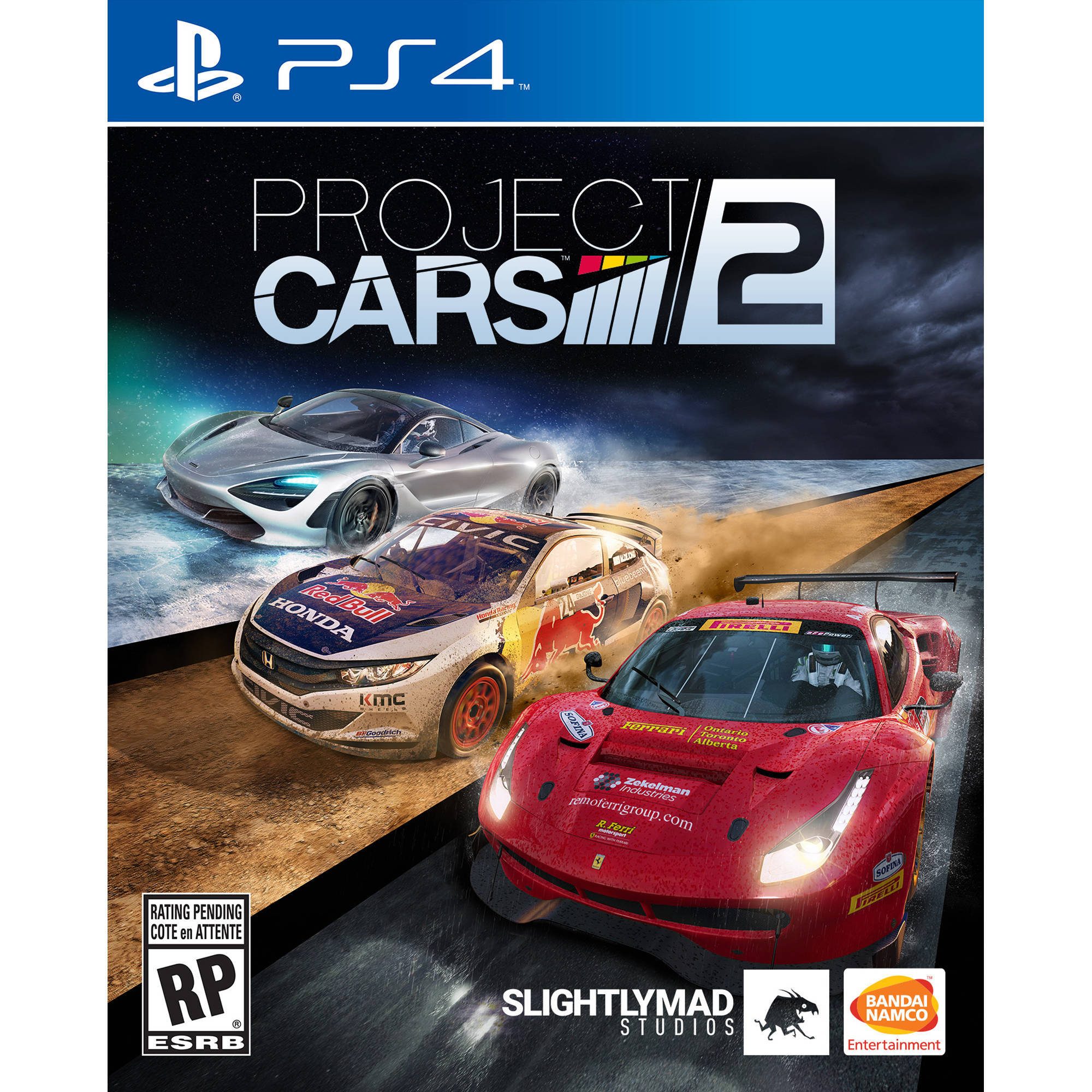
See more articles on Review and Slightly Mad Studios.

